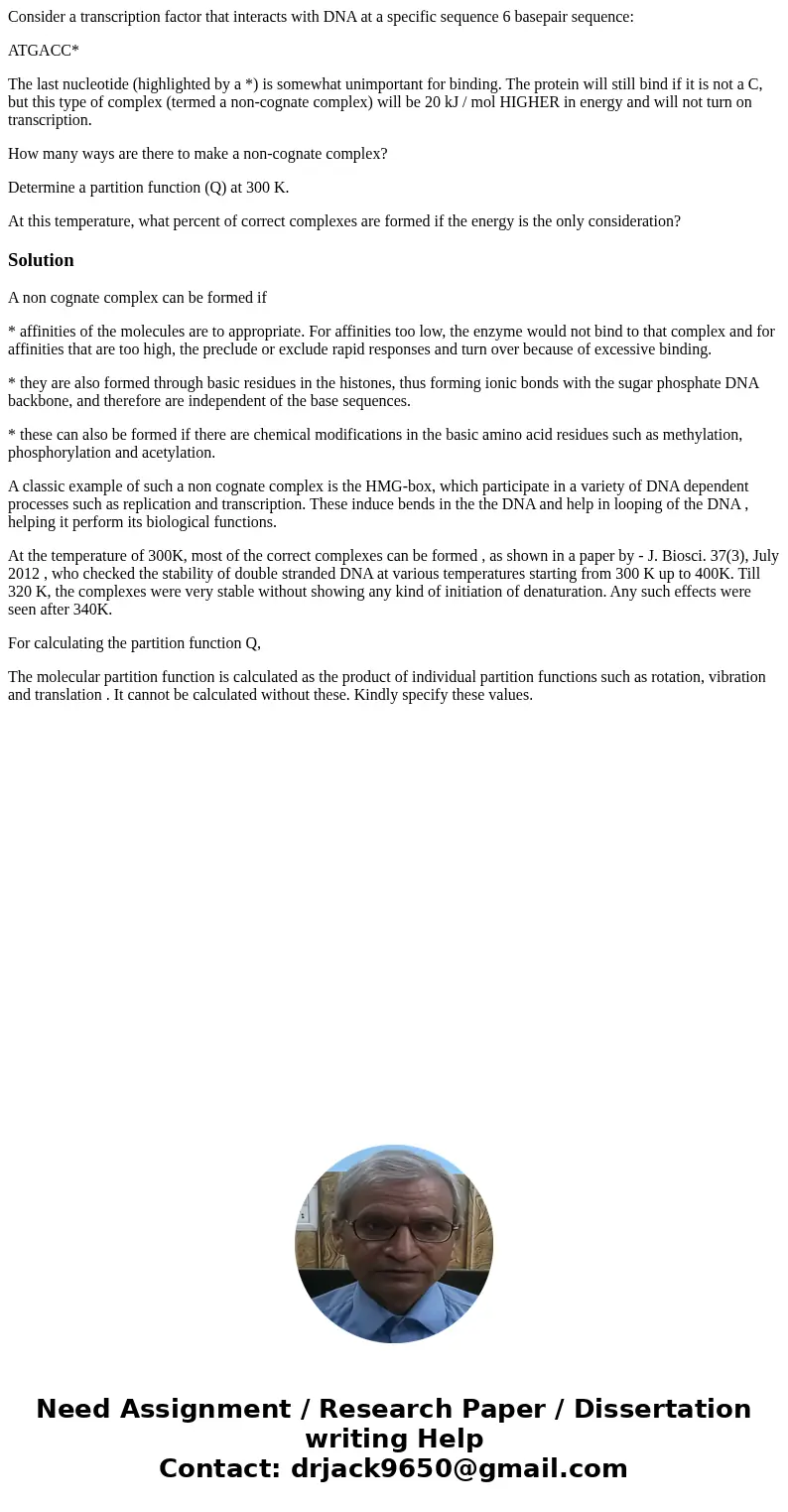Consider a transcription factor that interacts with DNA at a
Consider a transcription factor that interacts with DNA at a specific sequence 6 basepair sequence:
ATGACC*
The last nucleotide (highlighted by a *) is somewhat unimportant for binding. The protein will still bind if it is not a C, but this type of complex (termed a non-cognate complex) will be 20 kJ / mol HIGHER in energy and will not turn on transcription.
How many ways are there to make a non-cognate complex?
Determine a partition function (Q) at 300 K.
At this temperature, what percent of correct complexes are formed if the energy is the only consideration?
Solution
A non cognate complex can be formed if
* affinities of the molecules are to appropriate. For affinities too low, the enzyme would not bind to that complex and for affinities that are too high, the preclude or exclude rapid responses and turn over because of excessive binding.
* they are also formed through basic residues in the histones, thus forming ionic bonds with the sugar phosphate DNA backbone, and therefore are independent of the base sequences.
* these can also be formed if there are chemical modifications in the basic amino acid residues such as methylation, phosphorylation and acetylation.
A classic example of such a non cognate complex is the HMG-box, which participate in a variety of DNA dependent processes such as replication and transcription. These induce bends in the the DNA and help in looping of the DNA , helping it perform its biological functions.
At the temperature of 300K, most of the correct complexes can be formed , as shown in a paper by - J. Biosci. 37(3), July 2012 , who checked the stability of double stranded DNA at various temperatures starting from 300 K up to 400K. Till 320 K, the complexes were very stable without showing any kind of initiation of denaturation. Any such effects were seen after 340K.
For calculating the partition function Q,
The molecular partition function is calculated as the product of individual partition functions such as rotation, vibration and translation . It cannot be calculated without these. Kindly specify these values.

 Homework Sourse
Homework Sourse